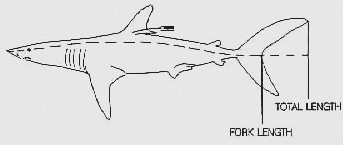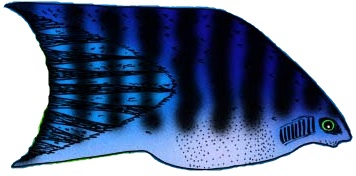|
Parapercis Striolata
''Parapercis striolata'' is a species of ray-finned fish in the sandperch family, Pinguipedidae. It is found in the western-central Pacific Oean from Japan to Australia and in the eastern Indian Ocean from Australia and Indonesia. Description ''Parapercis striolata'' can reach a standard length Fish measurement is the measuring of individual fish and various parts of fish anatomy, their anatomies, for data used in many areas of ichthyology, including Taxonomy (biology), taxonomy and fishery biology. Overall length Standard length (SL) is ... of . References * *Randall, J.E., 2001. Pinguipedidae (= Parapercidae, Mugiloididae). Sandperches. p. 3501–3510. In K.E. Carpenter and V. Niem (eds.) FAO species identification guide for fishery purposes. The living marine resources of the Western Central Pacific. Vol. 6. Bony fishes part 4 (Labridae to Latimeriidae), estuarine crocodiles. FAO, Rome. striolata Taxa named by Max Carl Wilhelm Weber Fish described in 1913 F ... [...More Info...] [...Related Items...] OR: [Wikipedia] [Google] [Baidu] |
Max Carl Wilhelm Weber
Max Carl Wilhelm Weber van Bosse or Max Wilhelm Carl Weber (5 December 1852 – 7 February 1937) was a German- Dutch zoologist and biogeographer. Weber studied at the University of Bonn, then at the Humboldt University in Berlin with the zoologist Eduard Carl von Martens (1831–1904). He obtained his doctorate in 1877. Weber taught at the University of Utrecht then participated in an expedition to the Barents Sea. He became Professor of Zoology, Anatomy and Physiology at the University of Amsterdam in 1883. In the same year he received naturalised Dutch citizenship. His discoveries as leader of the Siboga Expedition led him to conclude that Wallace's Line was placed too far to the west. His studies, along with others, led to a series of alternative lines to be proposed to delimit two major biogeographic realms, the Australasian realm and the Indomalayan realm. These lines were based on the fauna and flora in general, including the mammalian fauna. Later, Pelseneer p ... [...More Info...] [...Related Items...] OR: [Wikipedia] [Google] [Baidu] |
Ray-finned Fish
Actinopterygii (; ), members of which are known as ray-finned fish or actinopterygians, is a class of bony fish that comprise over 50% of living vertebrate species. They are so called because of their lightly built fins made of webbings of skin supported by radially extended thin bony spines called '' lepidotrichia'', as opposed to the bulkier, fleshy lobed fins of the sister clade Sarcopterygii (lobe-finned fish). Resembling folding fans, the actinopterygian fins can easily change shape and wetted area, providing superior thrust-to-weight ratios per movement compared to sarcopterygian and chondrichthyian fins. The fin rays attach directly to the proximal or basal skeletal elements, the radials, which represent the articulation between these fins and the internal skeleton (e.g., pelvic and pectoral girdles). The vast majority of actinopterygians are teleosts. By species count, they dominate the subphylum Vertebrata, and constitute nearly 99% of the over 30,000 extant ... [...More Info...] [...Related Items...] OR: [Wikipedia] [Google] [Baidu] |
Sandperch
The sandperches are a family, Pinguipedidae, of ray-finned fishes in the percomorph order Labriformes. Sandperches are benthic fish which normally occur over sand or rubble substrates in shallow seas. They are found off the coasts of South America, South Africa and in the Indo-Pacific as far east as Japan. The family contains a few species which are used by humans for food. Characteristics Some sandperches resemble wrasse in that they possess long dorsal and anal fins which may have a few spines and enlarged lips that appear to curl back with big canine teeth in the front of the jaws. They have elongated bodies which are flattened posteriorly and cylindrical towards the head. The body usually patterned with spots and bands, The eyes are positioned near top of head. They are relatively small in size, normally in length. These fish tend to sit on the sea bed, their bodies propped up by the widely separated pelvic fins. Some of the members of the speciose genus ''Parapercis'', m ... [...More Info...] [...Related Items...] OR: [Wikipedia] [Google] [Baidu] |
Standard Length
Fish measurement is the measuring of individual fish and various parts of fish anatomy, their anatomies, for data used in many areas of ichthyology, including Taxonomy (biology), taxonomy and fishery biology. Overall length Standard length (SL) is the length of a fish measured from the tip of the snout to the posterior end of the last vertebra or to the posterior end of the midlateral portion of the Glossary of ichthyology#H, hypural plate. This measurement excludes the length of the caudal fin, caudal (tail) fin. Total length (TL) is the length of a fish measured from the tip of the snout to the tip of the longer lobe of the caudal fin, usually measured with the lobes compressed along the midline. It is a straight-line measure, not measured over the curve of the body. Standard length measurements are used with Teleostei (most Actinopterygii, bony fish), while total length measurements are used with Myxini (hagfish), Petromyzontiformes (lampreys) and usually Elasmobranchii (shark ... [...More Info...] [...Related Items...] OR: [Wikipedia] [Google] [Baidu] |
Parapercis
''Parapercis'' is a genus of sandperches belonging to the family Pinguipedidae The sandperches are a family, Pinguipedidae, of ray-finned fishes in the Percomorpha, percomorph Order (biology), order Labriformes. Sandperches are benthic fish which normally occur over sand or rubble Substrate (biology), substrates in shallow .... Species There are currently 79 recognized species in this genus: * '' Parapercis albipinna'' J. E. Randall, 2008 * '' Parapercis albiventer'' H.-C. Ho, Heemstra & Imamura, 2014 (Whitebelly sandperch) * '' Parapercis alboguttata'' ( Günther, 1872) (Whitespot sandsmelt) * '' Parapercis allporti'' Günther, 1876 (Barred grubfish) * '' Parapercis atlantica'' ( Vaillant, 1887) * '' Parapercis aurantiaca'' Döderlein ( de), 1884 * '' Parapercis australis'' J. E. Randall, 2003 * '' Parapercis banoni'' J. E. Randall & Yamakawa, 2006 * '' Parapercis basimaculata'' J. E. Randall, Senou & Yoshino, 2008 * '' Parapercis bicoloripes'' Prokofi ... [...More Info...] [...Related Items...] OR: [Wikipedia] [Google] [Baidu] |
Taxa Named By Max Carl Wilhelm Weber
In biology, a taxon (back-formation from ''taxonomy''; : taxa) is a group of one or more populations of an organism or organisms seen by taxonomists to form a unit. Although neither is required, a taxon is usually known by a particular name and given a particular ranking, especially if and when it is accepted or becomes established. It is very common, however, for taxonomists to remain at odds over what belongs to a taxon and the criteria used for inclusion, especially in the context of rank-based (" Linnaean") nomenclature (much less so under phylogenetic nomenclature). If a taxon is given a formal scientific name, its use is then governed by one of the nomenclature codes specifying which scientific name is correct for a particular grouping. Initial attempts at classifying and ordering organisms (plants and animals) were presumably set forth in prehistoric times by hunter-gatherers, as suggested by the fairly sophisticated folk taxonomies. Much later, Aristotle, and later still ... [...More Info...] [...Related Items...] OR: [Wikipedia] [Google] [Baidu] |
Fish Described In 1913
A fish (: fish or fishes) is an aquatic animal, aquatic, Anamniotes, anamniotic, gill-bearing vertebrate animal with swimming fish fin, fins and craniate, a hard skull, but lacking limb (anatomy), limbs with digit (anatomy), digits. Fish can be grouped into the more basal (phylogenetics), basal jawless fish and the more common jawed fish, the latter including all extant taxon, living cartilaginous fish, cartilaginous and bony fish, as well as the extinct placoderms and acanthodians. In a break to the long tradition of grouping all fish into a single Class (biology), class (Pisces), modern phylogenetics views fish as a paraphyletic group. Most fish are ectotherm, cold-blooded, their body temperature varying with the surrounding water, though some large nekton, active swimmers like white shark and tuna can hold a higher core temperature. Many fish can communication in aquatic animals#Acoustic, communicate acoustically with each other, such as during courtship displays. The stud ... [...More Info...] [...Related Items...] OR: [Wikipedia] [Google] [Baidu] |
Fish Of Japan
A fish (: fish or fishes) is an aquatic, anamniotic, gill-bearing vertebrate animal with swimming fins and a hard skull, but lacking limbs with digits. Fish can be grouped into the more basal jawless fish and the more common jawed fish, the latter including all living cartilaginous and bony fish, as well as the extinct placoderms and acanthodians. In a break to the long tradition of grouping all fish into a single class (Pisces), modern phylogenetics views fish as a paraphyletic group. Most fish are cold-blooded, their body temperature varying with the surrounding water, though some large active swimmers like white shark and tuna can hold a higher core temperature. Many fish can communicate acoustically with each other, such as during courtship displays. The study of fish is known as ichthyology. The earliest fish appeared during the Cambrian as small filter feeders; they continued to evolve through the Paleozoic, diversifying into many forms. The earliest fish w ... [...More Info...] [...Related Items...] OR: [Wikipedia] [Google] [Baidu] |





